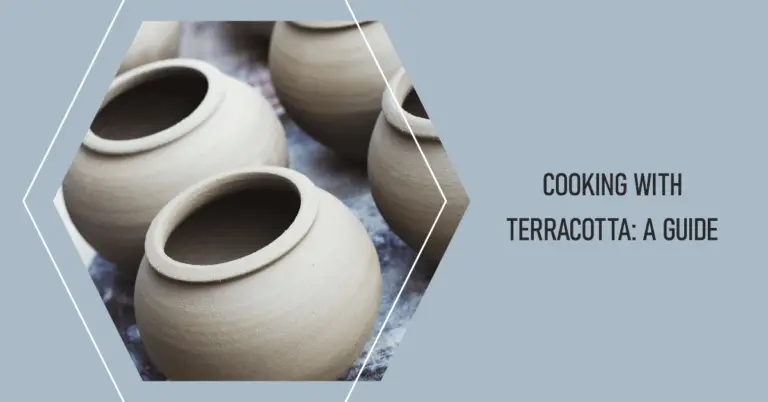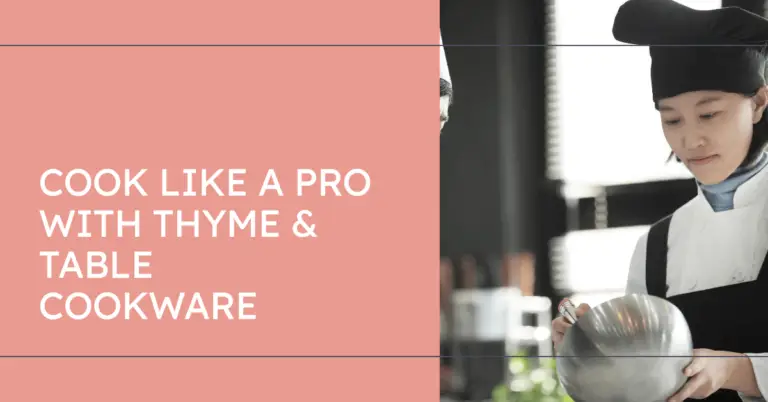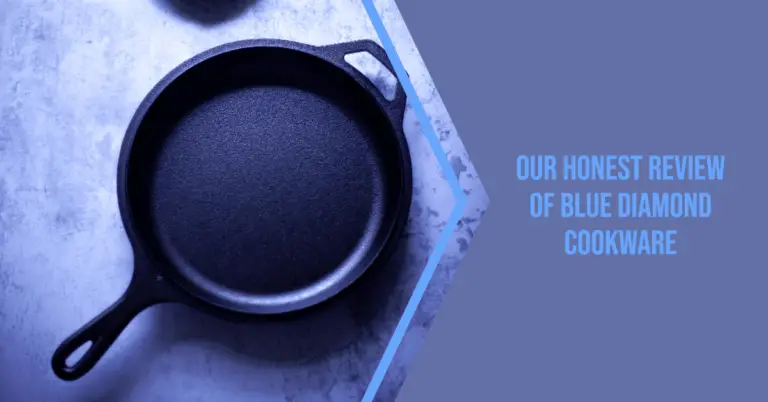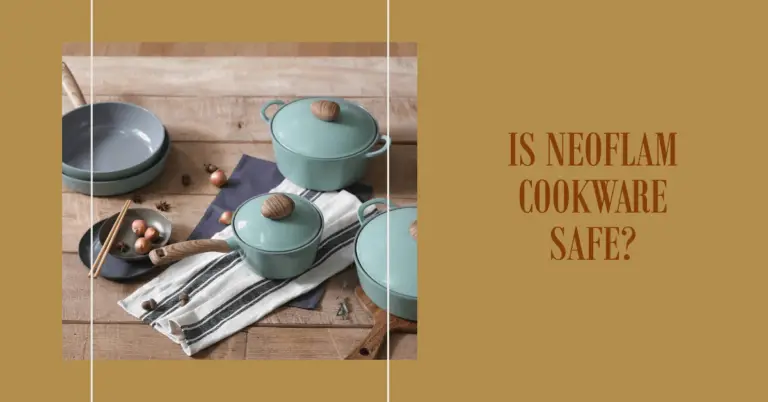Cuisinart vs All-Clad Cookware Comparison: Which Brand Is Better?
When it’s time to replace your old, worn out pots and pans, investing in a quality set of cookware is one of the wisest purchases you can make for your kitchen. High performance pots and pans distribute heat more evenly and consistently for superior cooking results. This allows you to control cooking temps better so foods like delicate seafood or finicky sauces don’t overcook or burn. Quality cookware also tends to have better durability, lasting for many years of frequent use when properly cared for.
With so many cookware brands on the market, Cuisinart and All-Clad are two of the most recognized and trusted names you’ll come across. But which is better for your cooking needs and budget? In this detailed comparison guide, we’ll be looking at critical factors like construction, performance, product range, pricing, durability, warranties, ease of use and more to declare a definitive winner between Cuisinart vs All-Clad.
All-Clad Overview
All-Clad is a premium American cookware company founded in 1971 by metallurgist John Ulam. By bonding layers of sturdy metals like aluminum and stainless steel, Ulam invented a new method of cookware construction that offered superior heating performance.
Today, All-Clad is still widely regarded as the gold standard of cookware brands. Though prices are on the higher end, generations of home cooks swear by the brand for its even heating, beautiful cooking results, and extreme durability that makes pans last a lifetime.
All-Clad manufactures its cookware in Canonsburg, Pennsylvania with American-made steel. Its product lines include:
- All-Clad Stainless: The classic 3-ply bonded construction of stainless steel exterior and cooking surface with an aluminum core.
- All-Clad D5: 5-ply construction with 5 metal layers for the ultimate in even heating.
- All-Clad Copper Core: Copper core for precise temperature control needed for delicate cooking.
- All-Clad HA1 Nonstick: Hard anodized aluminum exterior with stainless steel base and PFOA-free nonstick interior.
- All-Clad D3 Stainless: More affordable 3-ply option with disk of aluminum core.
- Bonded cookware: Ceramic, nonstick, and hard anodized aluminum options.
Within each product line is a wide selection of pots and pans in varying sizes. Pieces include fry pans, sauté pans, stock pots, saucepans, chef’s pans, and more.
Cuisinart Overview
Cuisinart was founded in 1973 by Carl Sontheimer, who introduced the food processor to the American market. While Cuisinart started with food processors and small kitchen appliances, they have since expanded into all types of kitchen tools including cutlery, cookware, and more.
While not at the same tier as All-Clad when it comes to premium cookware, Cuisinart pots and pans offer very good performance and quality at a much more affordable price point. They are ideal for home cooks who want an upgrade from basic big box store cookware but aren’t ready to splurge on the most expensive sets.
Some of Cuisinart’s popular cookware lines include:
- Multiclad Pro: Tri-ply stainless steel construction with aluminum core.
- Chef’s Classic: Affordable hard anodized aluminum exterior cookware.
- French Classic: Stainless steel exteriors with aluminum encapsulated bottoms.
- GreenGourmet Hard-Anodized: Eco-friendly nonstick cookware.
Like All-Clad, Cuisinart produces a wide array of both stainless steel and nonstick cookware to choose from.
Now that we’ve provided an overview of the Cuisinart and All-Clad brands, let’s directly compare the two on important deciding factors for your ideal cookware purchase.
Construction and Materials
The metals used in cookware construction, along with how they are bonded and layered together, significantly impacts how evenly and efficiently pots and pans conduct heat. Superior construction means fewer hot spots leading to burned food. It provides precise control over cooking temperatures.
All-Clad Construction
The hallmark of All-Clad is its durable 3-ply construction which bonds stainless steel to an aluminum core for the optimum marriage of durability, cooking performance, and easy cleaning. Here are the details on some key All-Clad product lines:
- All-Clad Stainless 3-Ply: The workhorse of the brand and what put All-Clad on the map. Sandwiches an aluminum core between layers of polished stainless steel on both interior and exterior.
- All-Clad D5 5-Ply: Top-of-the-line cooking with 5 layers of metal – alternating layers of stainless steel and aluminum bonded together reaching up the sides.
- All-Clad Copper Core: Copper core quickly adjusts to temperature changes ideal for delicate cooking. Exterior is classic All-Clad 3-ply stainless.
- All-Clad D3 Stainless 3-Ply: More affordable line with stainless steel surrounding an aluminum core disk on the bottom of pan rather than up sides.
- All-Clad HA1 Hard Anodized: Hard anodized aluminum exterior with thick aluminum core. Excellent heat distribution and durability. Stainless steel base plate. Interior nonstick coating PFOA-free.
Key things to note about All-Clad construction:
- Combination of metals like aluminum and copper provide excellent conductivity and even heating. Stainless steel brings durability and easy cleaning.
- Metals extend all the way up sides of pan, not just bottom, for consistent heating.
- Materials are bonded together, not just layered, for maximum durability.
- Handles permanently secured with rivets. Handle metals match pan construction.
Cuisinart Construction
While not as specialized in construction as All-Clad, Cuisinart cookware focuses on combining aluminum for good conductivity with stainless steel for durability. Nonstick interiors are common as well. Here are some of the most popular Cuisinart cookware lines:
- Multiclad Pro Stainless: Aluminum core bonded between stainless steel. Similar 3-ply design as All-Clad.
- Chef’s Classic Hard Anodized: Hard anodized aluminum exterior and cooking surface. Good conductor. Stainless steel disk bottom. Stay cool handle.
- French Classic Stainless: Stainless steel exterior with pure aluminum encapsulated bottom to allow even heat distribution up sides.
- GreenGourmet Hard Anodized: Eco-friendly nonstick interior coating. Exterior hard anodized aluminum with stainless steel plate bottom.
Things to note on how Cuisinart constructs its cookware:
- Aluminum or hard anodized aluminum used for heat conductivity. Stainless steel on higher end cookware only.
- Disk bottoms common even in stainless lines. Metals don’t always extend fully up sides.
- Most lines have stay cool handles, often riveted. Some lower price points have plastic handles prone to melting.
- Nonstick coatings on many lines. Some use safer ceramic nonstick.
Cooking Performance
Ultimately, the construction, metals used, and how the cookware distributes heat impact cooking performance. You want your cookware to heat evenly so foods cook properly without burning.
All-Clad Cooking Performance
All-Clad’s innovative bonding and layering of metals like aluminum and stainless steel set the bar for cooking performance. The aluminum core conducts heat quickly and evenly across the entire pan, including up the sides. This prevents hot spots so foods cook perfectly without scorching.
The stainless steel interior and exterior also lend nicely to searing and browning foods through direct contact. Many home cooks praise All-Clad for the charred, caramelized results akin to cooking in cast iron.
Within the All-Clad lines, the Copper Core offers the ultimate in responsiveness and control for delicate cooking. The copper immediately reacts to temperature changes.
If using All-Clad nonstick models, the anodized aluminum still provides exceptional heating. The PFOA-free nonstick coating allows for low-fat cooking with less oil needed.
Overall, All-Clad earns top marks for heating quickly and evenly across the entire pan surface for flawless cooking.
Cuisinart Cooking Performance
While Cuisinart can’t match All-Clad’s performance, its cookware still heats reliably for most home cooking needs. The aluminum and hard anodized aluminum models allow heat to spread evenly across the pan. Stainless steel exteriors lend nicely to browning and pan searing.
The lower end Cuisinart lines have less metal extending up sides, which can lead to more temperature variation from center to edges. But the overall cooking experience remains solid, especially for the price. Nonstick coatings also make cooking easier for many foods.
Cuisinart’s heating performance, while not perfect, will satisfy most home cooks. Serious chefs may want the precise control of All-Clad. But Cuisinart certainly heats better than cheaper big box store brands using thin aluminum pans.
Product Range and Offerings
Having an array of pan types and sizes to choose from is essential when equipping your kitchen. Let’s look at the product selection you can find from Cuisinart and All-Clad.
All-Clad Product Range
With its multiple premium lines, All-Clad offers an unparalleled range of cookware to fit any cooking need:
- Pots: From 1 to 8 quarts, saucepans and stock pots available. Mix of sizes ideal for boiling pasta, making soup and chili, steaming veggies or seafood, and more. Lids included.
- Frying Pans: 8 to 14 inches. Ideal for searing steaks, frying eggs, cooking pancakes, sautéing veggies and more. Various handle styles.
- Saute Pans: 3 to 7 quarts with wider cooking surface and tall, straight sides. Great for cooking meats, browning, making pan sauces from fond.
- Chef’s Pans: Similar to sauteuse with sloped sides. From 3 to 7 quarts. Multipurpose for one-pot meals.
- Grill Pans: Ribbed grill pan design leaves sear marks. Great for indoor grilling.
- Specialty Pans: All-Clad makes roasting pans, woks, deep chicken fryers, and more. Wide range ideal for all cooking methods.
Beyond diverse individual pans, All-Clad bundles extensive multi-piece cookware sets. Their 10 and 14 piece sets can handle any recipe.
With All-Clad, you’ll never be lacking for the right cookware piece for a recipe.
Cuisinart Product Range
Cuisinart provides a solid range of essential pots and pans to outfit most home kitchens:
- Pots: From 1 to 8 quarts. Includes saucepans, stock pots, sautoir pots, multipots with built-in strainer. Lids available.
- Skillets: 8 to 12 inches. Equipped for frying, sautéing, stir frying. Some grill pans available.
- Saute pans: Only 3 to 4 quart sizes. Shorter product range than All-Clad.
- Chef’s pans: 6 to 8 quarts in size. Few specialty pieces like woks.
- Sets: Many 5 and 7 piece essential sets available. Fewer offerings than All-Clad past basic starter sets.
The main downside of Cuisinart is the narrower range of specialty cookware available beyond basic pots and pans. While All-Clad excels at one-pot and roasting pans, woks, deep fryers, Cuisinart just focuses on core skillets and saucepots.
Pricing and Value Comparison
One of the biggest differences between the two brands is the price you can expect to pay. Let’s break down how Cuisinart and All-Clad cookware costs compare.
All-Clad Pricing
As a premium brand, All-Clad commands premium pricing, far above cheaper department store options. Some typical All-Clad pricing ranges:
- Frying Pans: $100 to $200+
- Saucepans: $100 to $275+
- Sauté Pans: $150 to $350+
- Stock Pots: $200 to $350+
- Specialty Pieces: $175 to $500+
And for complete sets:
- 10 piece sets: $700 to $1200+
- 14 piece sets: $900 to $2000+
The core All-Clad Stainless 3-ply line sits on the lower end of these price ranges. Their specialty options like Copper Core and D5 5-ply reach the higher premium tiers.
Bottom line is that All-Clad costs several factors higher than mainstream cookware. While expensive, keep in mind these products last decades with proper care. Per year of use, the cost is reasonable.
Cuisinart Pricing
Cuisinart aims to provide quality cookware at an affordable price tier. Here are some typical MSRP pricing ranges:
- Frying Pans: $30 to $120
- Saucepots: $40 to $150
- Stock Pots: $50 to $200
- Sets: $80 to $300+
Within a line, lower priced pieces have more plastic components. The higher end Multiclad Pro line reaches near $200 for some pieces.
But overall, Cuisinart ranges from one-fifth to one half the price of comparable All-Clad cookware. While less fancy in construction, you still get good quality and performance from Cuisinart at a bargain cost.
Durability and Warranty
Investing in a high quality set of pots and pans only pays off in the long run if the cookware stands the test of time. Let’s examine how durable All-Clad and Cuisinart pans are, along with the warranties backing them up.
All-Clad Durability
One of All-Clad’s biggest selling points is its extreme durability and longevity. Many users report All-Clad lasts for decades, even with constant daily use. A few factors that contribute to longevity:
- Bonded construction prevents separation or warping. All-Clad products are put through heating tests to ensure durability.
- Stainless steel exterior resists scratches, dents, and corrosion. Easy to keep looking new.
- Riveted stainless steel handles stay firmly attached, even when moving heavy, full pans.
- Can safely use on induction, in oven, under broiler, and are dishwasher safe.
All-Clad is confident in its durability that every piece comes with a lifetime warranty. They stand behind their products lasting a lifetime when cared for properly. Defects in materials and workmanship are covered.
Cuisinart Durability
Cuisinart cookware is not quite as indestructible as All-Clad, but still provides good longevity:
- Tri-ply and hard anodized models durable under normal use. Budget lines more prone to warping.
- Exteriors like stainless and anodized aluminum resist scratches and dents well. Nonstick less durable.
- Most riveted handles. Some lower end plastic handles prone to loosening or melting.
- Generally safe for all cooking methods except nonstick models. Dishwasher safe.
Cuisinart offers a limited lifetime warranty on defects in materials and workmanship. Does not fully cover wear and tear over time like All-Clad.
For the price, Cuisinart pots and pans deliver good durability. But All-Clad still edges out as the truly “buy it for life” cookware.
Ease of Cleaning
After cooking up tasty meals, you want cookware that cleans up quickly and easily. Here is how Cuisinart and All-Clad compare when it comes to cleaning.
All-Clad Cleaning
Thanks to the polished stainless steel cooking surface, All-Clad cookware cleans up beautifully after use:
- Smooth, brushed stainless interiors avoid sticking, staining, and build up.
- Food residue and fond rinses away easily with warm water.
- Soap and water is often all that’s needed for immaculate results.
- Completely dishwasher safe for ultimate convenience.
- Durable surfaces allow for using metal utensils during cooking for easy scraping.
Some of All-Clad’s nonstick offerings make cooking and cleaning up even easier. But even the stainless models clean up quick and easy after meals.
Cuisinart Cleaning
Cuisinart cookware is simple to clean with some key pointers:
- Nonstick interiors make cleaning easiest when using wood, plastic, or silicone tools to avoid scratching.
- Stainless models require a bit more elbow grease for stubborn debris but generally rinse clean.
- Soaking tough messes like burned on food in warm water helps loosening.
- All Cuisinart cookware is labeled dishwasher safe. Top rack recommended for nonstick.
One downside of Cuisinart can be the exterior surface on budget cookware. Cheaper metals like aluminum can discolor or stain over time. But keeping exteriors well-greased during cooking prevents most of this.
Overall, clean up is straightforward with both All-Clad and Cuisinart. For serious cooks doing lots of cooking, All-Clad may be easier long term. But Cuisinart certainly cleans up nicely with just a little extra care.
Appearance and Style
Beyond just performance, you want cookware that looks beautiful in your kitchen. Here is how Cuisinart and All-Clad pots and pans compare aesthetically:
All-Clad Appearance
With its polished, commercial-grade stainless steel finish, All-Clad cookware looks professional and luxurious:
- Brushed stainless steel exteriors provide understated elegance and shine.
Here is the continuation of the comparison on appearance and style:
- Stainless interiors look clean and immaculate after cooking. Easy to keep looking new.
- Classic silhouettes on pots and pans. Lids have signature dome shape.
- Stylish All-Clad logos engraved on pieces.
- Simple but substantial handle designs. Mostly stainless steel.
- Copper and bronze tones on higher end cookware lines add warmth.
All-Clad just looks and feels like fine cookware. It has an heirloom quality fit for passing down generations or giving as a gift. The All-Clad stainless in particular provides timeless beauty.
Cuisinart Appearance
While not as luxe, most Cuisinart cookware still looks stylish and modern:
- Brushed stainless steel finishes provide understated shine without too much flash.
- Hard anodized aluminum models have dark, gray matte look popular in kitchens.
- Nonstick interiors avoid scorches and stains over time.
- Silhouettes on pots and pans clean but less distinctive than All-Clad.
- Branding more overt with large logos.
- Handles often plastic on lower price points.
Cuisinart doesn’t have the heirloom feel of All-Clad, but for the price provides an attractive addition to your kitchen. The stainless and anodized aluminum both coordinate well with modern appliances and kitchen aesthetics.
Conclusion: Which Brand is Best for You?
After looking closely at construction, performance, product range, pricing, durability, ease of use, and aesthetics, here are our final recommendations on whether All-Clad or Cuisinart is the better cookware brand for you:
- For Serious Home Cooks: All-Clad is worth the investment, providing unmatched cooking performance and longevity. Products feel like family heirlooms.
- For Novices on a Budget: Cuisinart delivers quality above its price point. Excellent value while still performing reliably.
- Best High End Gift: All-Clad makes a lavish, memorable gift. Feels special.
- Best Registry Addition: Cuisinart allows newlyweds to outfit their kitchen beautifully without breaking the bank.
We hope this detailed comparison of Cuisinart vs All-Clad helps you feel confident choosing the right cookware to match your needs, preferences, and budget. With smart care, pots and pans from both brands have the ability to last years while preparing countless tasty meals for you and your loved ones.




